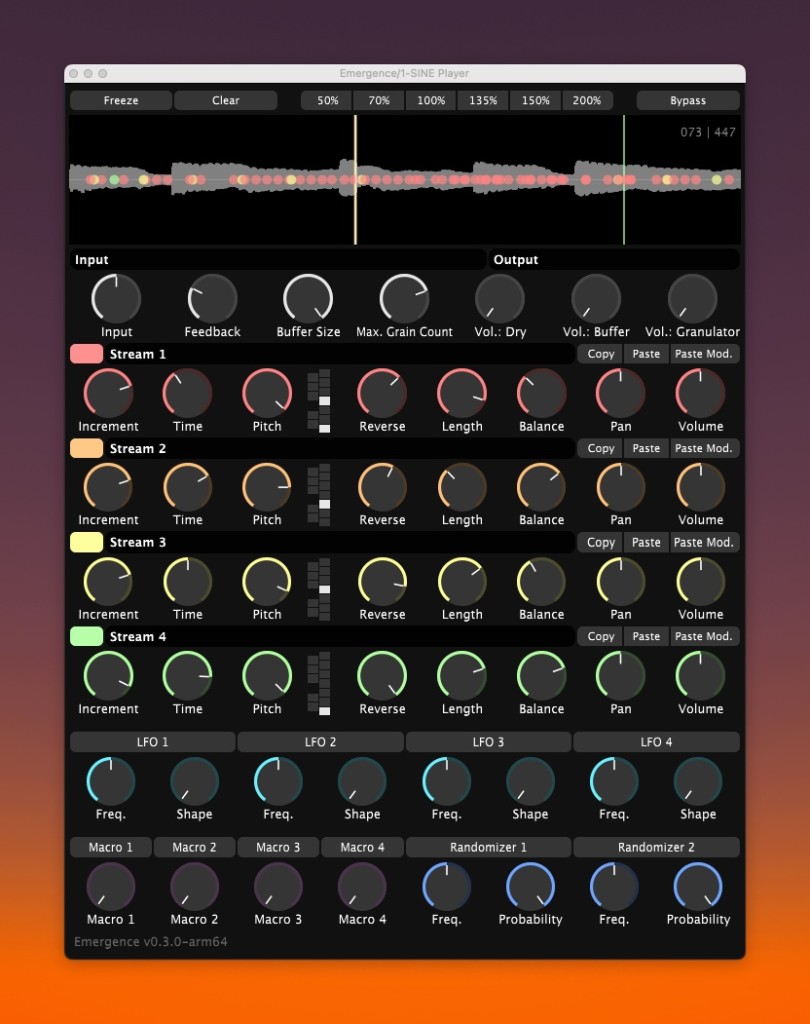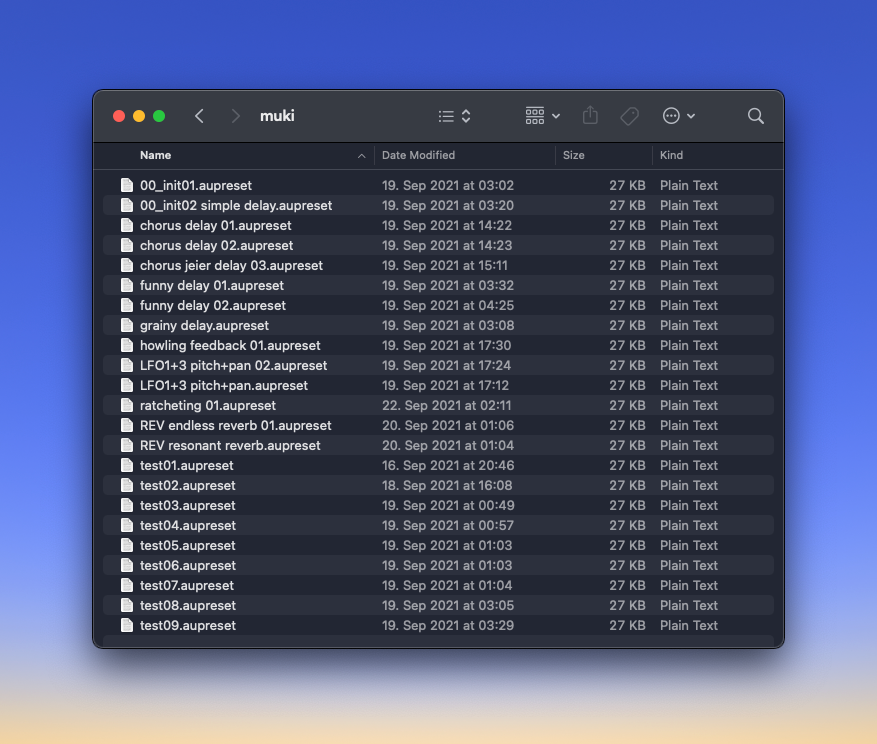Real-time granulator Emergence spins incoming audio streams into rich textures – and it’s a free download, with inexpensive Patreon options available to support the author. I’ve been hands-on with it lately; here’s how to get more out of it.

Granulators have matured enough to be considered a staple audio effect category, alongside delays and chorus and all the rest. Apart from the price being right, Emergence is just a nicely implemented rendition, with tons of logically laid-out controls and a nice visualization, plus support on macOS VST3 and AU (Universal for Intel and Apple Silicon) and 64-bit Windows VST3. (Hat tip to Synth Anatomy for picking this one up!)
Granular synthesis, for those not in the know, is a generalized term describing conceiving sound as a combination of smaller pieces (the grains). The technique predates even its digital realization, most associated with composers like Xenakis, whose scored works also played with the perception of larger textural wholes from overlapping parts. (Xenakis, for his part, made granular synthesis work with tape.) Added to a buffer like this, you get something that’s not quite a conventional sampler/looper, not quite a delay, but that produces fused, layered textures out of an audio source.
And it sounds beautiful:
All this fine work netted developer Daniel Gergely a 2021 Developer Challenge award, with a major 0.3 update adding stereo processing, quantization for grain pitch, and additional random modulators. That moved the needle – or, uh, Hanning window – into the must-download category. Add $1 a month, and you can support Daniel’s efforts and encourage more.
Full features:
- Windows 10 / macOS 10.9 support (OpenGL 3 required, though that gives you OpenGL UI acceleration)
- Up to 600 grains, limited only by CPU
- 4 separate streams – these are color-coded, down the interface
- Grain pitch transposition (+/- 24 semitones, with quantization)
- Modulation with LFOs, macros, randomization
- Freeze buffer option
- Resiable UI
- Built-in help
Download link:
emergence v0.3 update released! [Daniel Gergely, Patreon]
v0.3 is really the first version worth using, thanks to stereo processing and randomization, both of which are pretty essential.
But what I really appreciate about this one – particularly for a freebie – is the quality of its pitch transposition. Having four streams to access and being able to tune them immediately gives you gorgeous, harmonically-pleasing results.
For even more free-as-in-beer action, I paired Emergence with the lovely Spindle, a free felt piano you can get from Orchestral Tools’ excellent SINE Player and library. More on that soon, but it’s also yours for a song/email signup:
https://www.orchestraltools.com/sinefactory
I actually had totally missed that Daniel also did a piano demo, but hey, it’s obligatory. What’s nice about this is, you get to really hear those harmonic results. Here’s my live jam, all from a simple loop on the piano (I found simpler inputs were really the way to go):
I love the dot visualization, too.
So it’s pretty straightforward in the interface; I decided to play live and didn’t even dig into the excellent modulation section in this example. (I just set some settings I like I left them.) But what you’ll see is the musical value of being able to get higher-quality pitch transformations and quantization.
And wait – there’s more. If you’re on Logic Pro on the Mac, you can take advantage of some .aupreset programs to get you started, created in September by KVR user muki:
https://www.kvraudio.com/product/emergence-by-daniel-gergely/downloads

It does take me back to when I was playing with Samplr and live acoustic piano in Riga some years ago:
Now go support Daniel’s work – it’d be great to see this developed further and grow. This is easily worth a few bucks a year.
https://www.patreon.com/daniel_gergely
And not to get distracted, but there’s some brilliant stuff from the 2021 awards – sorry I missed writing this up first time around:
https://www.kvraudio.com/kvr-developer-challenge/2021/
Oh yeah, and – this is how Xenakis made it work with tape. Honestly, crank this up – your coworkers / significant other / children / cat will love it (you’ll get snippets of electronics between all they – let’s call it ‘tuneful’ string writing):